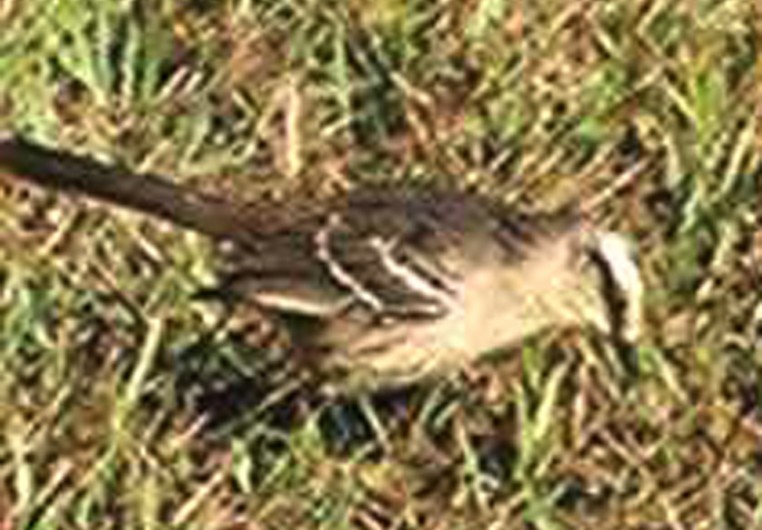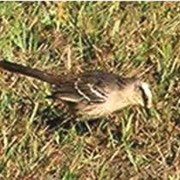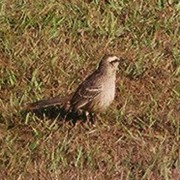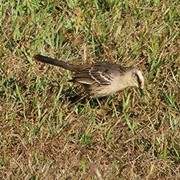Biodiversity
 Chalk-browed Mockingbird
Mimus saturninus | Lichtenstein, 1823
Chalk-browed Mockingbird
Mimus saturninus | Lichtenstein, 1823

Vocalization

Characterization: Small to medium-sized species measuring about 26cm in length. Its back, the top of its head, its wings, and its tail are gray, its chest and belly are yellowish-white or purplish from the earth, and its iris is yellow. It is best identified by the prominent white eyebrow and long tail with white tips.
Distribution: From the lower Amazonas, central, Northeastern, Eastern and Southern Brazil to Uruguay, Paraguay, Argentina, and Bolivia.
Habitat: Any open and semi-open landscape with trees or bushes, farms, around dwellings, scrublands, the mountains in the Southeast (Mar and Mantiqueira Mountain Ranges), and Moriche palm groves (Mato Grosso and Goiás).
Habits: A diurnal species, it lives in small groups, perched in low areas or on the ground.
Diet: Omnivorous, it feeds both on insects and spiders and on berries, seeds and, optionally, other birds' eggs.
Breeding: It lays 3-4 eggs in a nest that resembles a shallow bowl and made roughly in the canopy of a tree in the field and lined with soft material; it likes to build a new nest on an old one, including of some other bird.
In the UFRA area: The Chalk-browed Mockingbird is a frequent species of bird in the surveys that were done. It was spotted 60 times. Its spatial distribution was broad, having been seen in the organic sugarcane fields, exotic forests, wetlands with herbaceous plants, wetlands with riparian forests, in restored native forests, in native forests, drainage ditches, in forests in spontaneous regeneration, and in fields in spontaneous regeneration.






